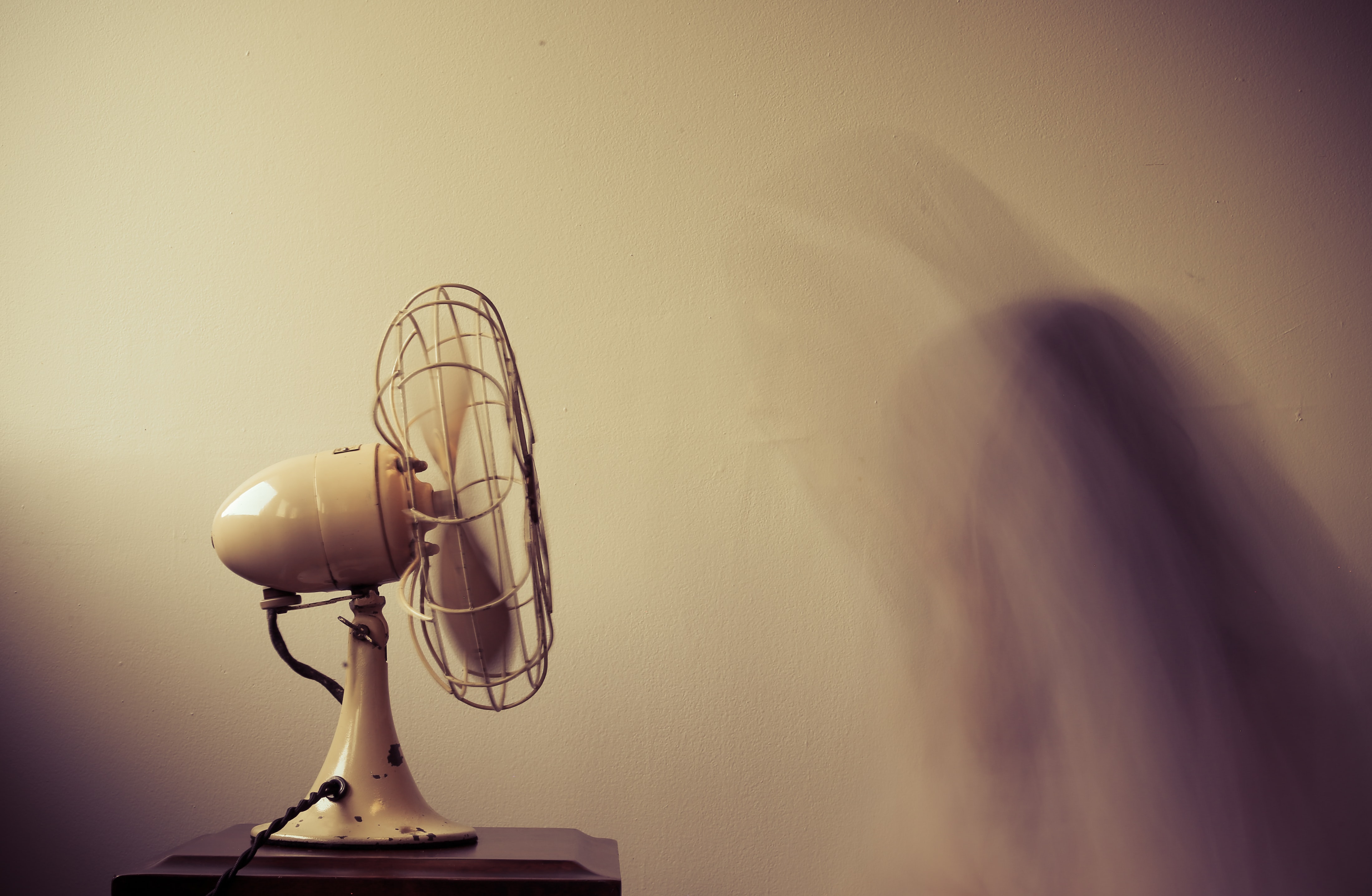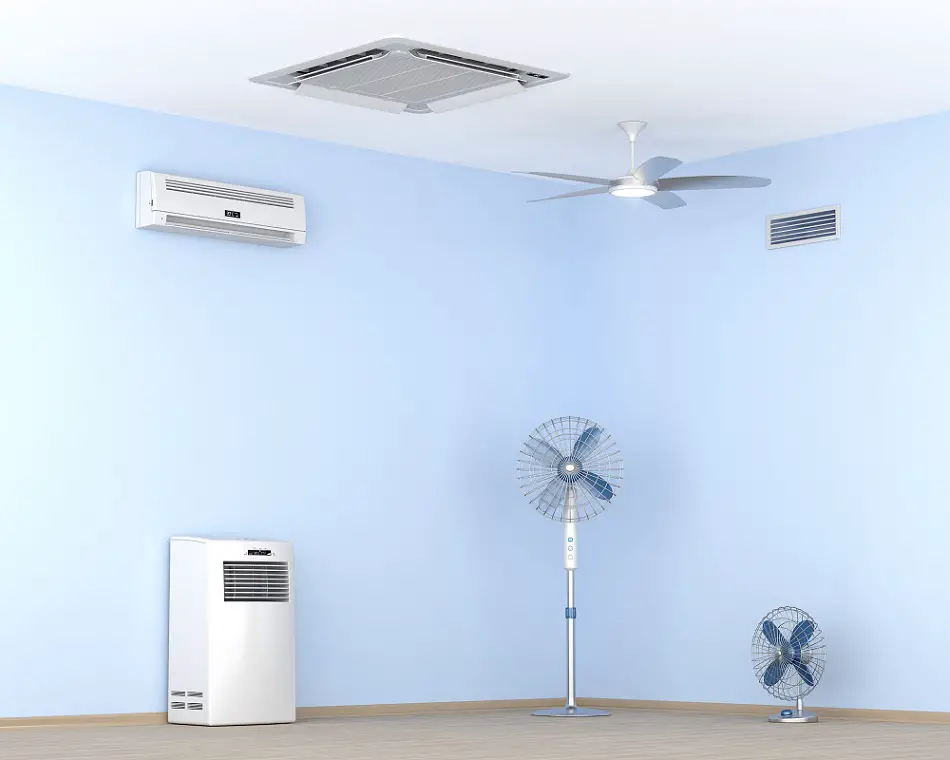Often when you’re trying to add moisture to dry air inside the home, a humidifier seems to alleviate dryness in only a limited space close to the device. So, It makes sense that you might want to try using a fan to move the moistened air around a bit so that it’s more evenly dispersed in a room or throughout the house.
You can run a fan and a humidifier at the same time. A fan can help disperse the moisture more evenly in the room where the humidifier is being used. Depending upon the type of humidifier, you may want to make sure the fan doesn’t cool the room to the point that condensation is created.
The remaining paragraphs identify the types of humidifiers available for purchase and those that might be more helpful if a fan is used with them. Also discussed is why we may need to add moisture to our indoor environment and suggestions about the best way to do it and not overdo it. Finally, are two opinions on how best to add moisture to a room or home, one using a fan with a humidifier, the other a humidifier alone.
What Is a Humidifier?
A humidifier is a device that adds moisture to indoor air by creating steam or a cool mist. However, it can also be a do-it-yourself way of decreasing dry air. The alternative ways can include boiling water in a pot or kettle or using plants to add moisture to a room or house. There are several types of manufactured humidifiers to choose from, and some of these come with their own fans as part of the systems.
What Are the Different Types of Manufactured Humidifiers?
There are five basic types of humidifiers. Four of these are rather small and portable.
Portable Humidifiers
- Evaporators: This type produces a very fine, almost invisible mist emitted from a wick with a fan blowing over it. The wick must be cleaned often to keep mold and bacteria from growing, and the fans can be noisy, though likely not noisier than a small portable house fan.
- Impeller: This type uses a rotating disk to pump cool mist into the air through a comb-like diffuser.
- Ultrasonic: This also uses a fan to disperse a cool-mist created by high-frequency sound vibrations. It also requires regular cleaning to prevent mold and bacteria growth.
- Steam vaporizers: This type releases boiled water as steam, which cools to a warm mist. They must be used with caution and are generally not recommended for use near children.
Central Humidifiers
- Central humidifiers are hooked up to a home’s plumbing system and use municipality water, making proper filtration necessary. Since they are hard-wired into the home’s air conditioning and heating system, they are designed to humidify the structure’s entire interior.
Why Use Humidifiers?
Running central heat in the winter and even air conditioning in the summer often dry out the indoor air too much, and our skin and mucous membranes can suffer from lack of moisture.
Board-certified dermatologist Jessie Cheung, MD, says that a humidifier can make breathing more comfortable and also make your skin feel and look better by keeping it from drying out.
Plants don’t thrive in the air that is too dry either, according to Horticulture Magazine, nor do some of our wood floors, furniture, or wallpapers.
To prevent health and other problems from too little moisture, the humidity level should be between 30% and 50% and above 35% to prevent static electricity that can harm computers.
Most experts recommend using filtered or distilled water in humidifiers to avoid adding microorganisms and minerals to the air.
Can You Over-Humidify?
You can add too much humidity to a room, making it stuffy and fog up the walls and windows, leading to mold, bacteria, and dust mite growth. These can all trigger allergies and cause respiratory problems. Even worse, too much humidity in the house can harm your computers.
According to the CDC, the American Society of Heating and Air-Conditioning Engineers (ASHRAE) recommends keeping the humidity level below 65% for comfort.
How Can You Prevent Over-Humidifying?
To be sure that you’re not overdoing humidifying, it would be good to frequently check the inside humidity until you get an idea of how you’re doing with all the techniques you’re using, and then, afterward, check the levels periodically.
Humidity is measured with a hygrometer. Pulmonary specialist Kathrin Nicolacakis, MD, who recommends keeping adequate moisture in the air to keep skin and nasal passages from getting too dry, recommends keeping a hygrometer in your home for health reasons also helps ensure your computer runs properly.
Amazon has several inexpensive hygrometer/thermometer combinations, and this Govee Indoor Hygrometer Thermometer is one of its highest-rated.
Also, the Mayo Clinic suggests considering a humidifier that has a built-in hygrometer that automatically regulates humidity.

How Can Running a Fan With a Humidifier Help?
If you are using a humidifier that doesn’t already use a fan, it makes sense to run your own ceiling fan or portable fan to help disperse the moist air emitted.
Ethan’s Sleep Cavern seems to be one of the few sources online that specifically discusses using a fan along with a humidifier. The humidifier used in this discussion, which does recommend adding a fan under most circumstances, is an ultrasonic model by Pure Guardian that provides either cool or warm mist and, interestingly, nano-silver technology to prevent mold and bacteria growth.
Even though this model has its own fan, Ethan recommends using an additional fan because it disperses the moisture more quickly in the room and because the “white noise” from both fans help him sleep.
When Would Running a Fan With a Humidifier Not Be Good?
Ethan with Sleep Cavern says he contacted several HVAC experts to ask about using the two devices simultaneously. He explains that running a fan with a humidifier will not make the air less humid unless you open the windows, and the air outside is drier than inside. If this is the case, you will bring in dry air and lose the moisturized inside air, thus defeating the purpose of using the humidifier.
Other than this issue, Ethan concludes that there’s not really a downside to using a fan with the humidifier.
However, one site linked from Sleep Cavern points out that a fan shouldn’t be run to the point that it cools down surfaces so much that condensation is created, although this seems to be an issue with larger buildings and factories than with homes.
Advice for Using Humidifiers Without Adding a Fan
Marco Arment’s “opinion on humidifiers” is good advice for deciding which humidifier to use—recommendations Marco bases on his own experience working to humidify his home.
Arment has found that “Almost nobody buys a humidifier that they’re happy with and that effectively humidifies the air,” but we don’t know if he’s tried using one with a fan.
Using a steam humidifier, he says, is really no better than boiling water on the stove in a kettle or pot, in that both “can easily over-humidify a room and fog up the windows and walls.” After trying all the types of humidifiers on the market, Arment says he found the most success with evenly humidifying his home by using evaporative humidifiers, which he uses with water additives and filter replacement—”once or twice a season.”
Final Thoughts
It appears that using a fan with a humidifier may be the best overall solution to making sure the moisture doesn’t sit in one place and more evenly humidifies the area. As long as you don’t open windows when the air is dry outdoors or allow the fan to cool the space and create condensation, there seems to be no evidence supporting harm from using these two devices simultaneously.
Ethan with Sleep Cavern does advise that a ceiling fan may be the best choice if you use a fan, although a small portable fan placed near the humidifier is also helpful.
Sources
- Cleveland Clinic: Kathrin Nicolacakis, MD
- Cosmetic Dermatology Chicago: Jessie Cheung, M.D.
- Hortmag: Increase Humidity for Houseplants
- Techwalla: What Are the Effects of Heat and Humidity on Personal Computers?
- CDC: Indoor Environmental Quality
- Mayo Clinic: Humidifiers: Air Moisture Eases Skin, Breathing Symptoms
- Sleep Cavern: Everything About Using a Humidifier AND a Fan in Your Bedroom
- Sleep Cavern: About Me (Ethan)
- Dictionary.com: White Noise
- Big Ass Fans: How Airflow Affects Condensation Control Efforts
- Marco: Marco Arment’s Opinion on Humidifiers

